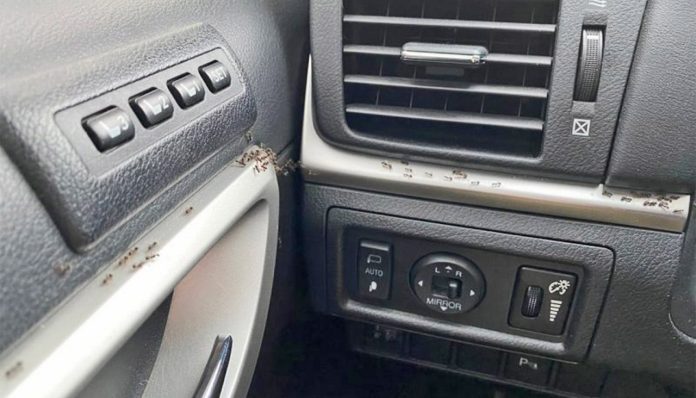
Invasive ants have found a surprising new way to travel: hitchhiking on everyday vehicles.
Research shows that these ants pack up their entire colony, including the queen, and catch a ride to new areas where they can start fresh colonies.
Scotty Yang, an assistant professor in the Virginia Tech Department of Entomology, recently published a study in Ecological Entomology about this phenomenon.
From 2017 to 2023, Yang observed nine species of ants hitchhiking on personal vehicles, seven of which were invasive to the places they were found.
While it’s well-known that insects can hitch rides on agricultural machinery and trucks, Yang’s study is the first to focus on ants hitching rides on everyday cars.
His research was a citizen science project that used social media reports from people across Taiwan.
The study looked at various factors, such as the time of year, weather, type of car, location, duration of stay, and number of ants, to understand what makes a successful hitchhiker colony.
“We saw social media posts where people were devastated about finding their cars covered in ants,” Yang says. “Although we felt sorry for them, we wanted to examine whether these events had anything in common.”
Yang discovered that for hitchhiking ants to succeed, they need three main things: the ability to climb the car’s surface, foraging or colonizing behavior, and the ability to withstand the vehicle’s temperature.
Tracking the spread of invasive insects is crucial for scientists because these creatures can threaten native plants and animals. Invasive ants were previously thought to spread mainly through agricultural materials like logs, plants, and dirt.
However, the impact of non-commercial transport, like personal vehicles, was not well understood.
Most personal vehicles don’t offer food or shelter, but ants from overcrowded colonies seek new, bigger homes. Native ant species face these pressures less frequently, making invasive species more likely to hitchhike and spread to new areas.
Yang’s study could have significant implications for Virginia and the Eastern United States.
Of the 100 worst invasive species in the world, five are ants, and two of these, the red imported fire ant and the Argentine ant, are already established in Virginia. These ants have been found further north, likely due to rising temperatures over the past decade.
Yang suggests that hitchhiking events will help these ants spread even more quickly. He hopes to start a similar citizen science program in Virginia to track the spread of invasive ants and their connection to personal vehicles.
By understanding how invasive ants hitchhike on cars, we can better prepare to prevent their spread and protect native species from their impact.



